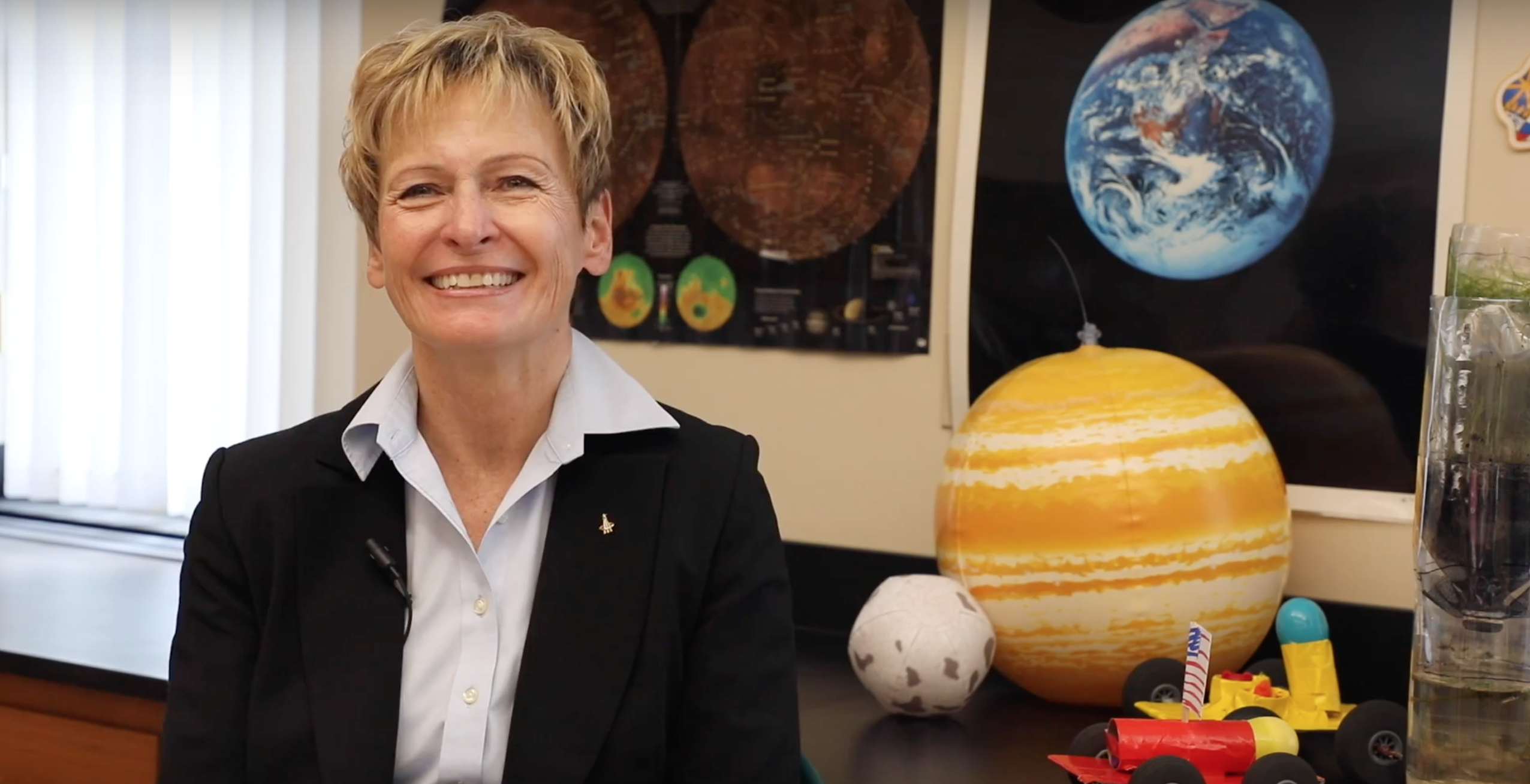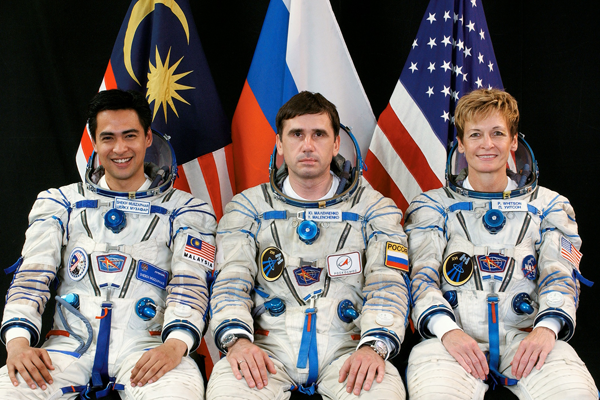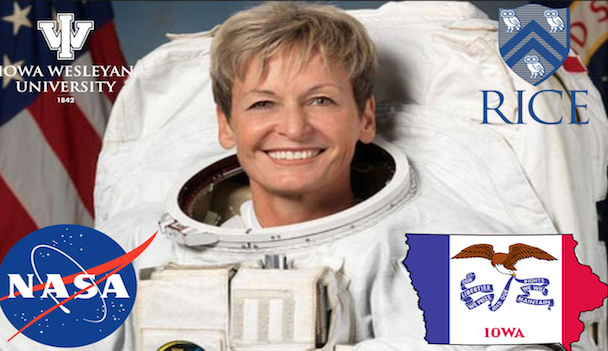The extraordinary life of Dr. Peggy Whitson
Dr. Peggy Whitson (Ph.D.), an astronaut who worked for the National Aeronautics and Space Administration (NASA) until her recent retirement in June 2018, visited Sacred Heart Greenwich Monday, October 29. During her visit, she helped launch the improved Mary Aloysia Hardey RSCJ Observatory after its remodel during the summer. She shared her personal experiences in space exploration and science with students among all grades at an all-school assembly.
Dr. Whitson is a highly decorated scientist and astronaut who holds the record for the most days spent in space by any United States astronaut. In addition, she was the first female commander and the first nonmilitary commander of the International Space Station.

Dr. Whitson was born February 9, 1960, in Mount Ayr, Iowa. She grew up in the nearby small town of Beaconsfield, Iowa, which has a population of only 15 people. She graduated from Mt. Ayr Community High School in 1978 and furthered her education at Iowa Wesleyan College where she received a Bachelor’s of Science degree in Biology and Chemistry in 1981. She later pursued her Doctorate in Biochemistry at Rice University in 1985, according to nasa.gov.
Dr. Whitson drew inspiration from renowned public figures such as Mr. Neil Armstrong and the first female astronaut Ms. Sally Ride as she strived to become an astronaut.
“When Neil Armstrong and Buzz Aldrin walked on the moon it really left an impression on me,” Dr. Whitson said. “I dreamed of becoming an astronaut then. I think it wasn’t until I graduated from high school though that it changed from being a dream into being a goal and it was something I was more dedicated and in pursuit of.”
Dr. Whitson received a fellowship to research chemistry from The Welch Foundation. The Welch Foundation is one of the United States’ largest private funding sources for basic chemical research, according to welch1.org. She completed this fellowship at Rice. Dr. Whitson continued her studies at the NASA Johnson Space Center in Houston, Texas as a National Research Council Resident Research Associate.
At the Space Center, she worked as a Research Biochemist in the Biomedical Operations and Research Branch. After this initial introduction to NASA, Dr. Whitson held various other positions including Technical Monitor of the Biochemistry Research Laboratories, Payload Element Developer for the Bone Cell Research experiment aboard the space mission STS-47, and member of the United States-Soviet Union Joint Working Group in Space Medicine and Biology, according to nasa.gov.
In 1992, Dr. Whitson became the project scientist of the Shuttle-Mir Program, which was a collaborative space program between Russia and the United States, according to nasa.gov. She oversaw the program until its conclusion in 1995.

In April 1996, the Astronaut Selection Board chose Dr. Whitson as an Astronaut Candidate. Before embarking on her first space flight she needed to complete a total of five years of pre-work and evaluations. During this time, she performed various ground jobs supporting other astronauts who were also training or in orbit. She then spent the following three years training for her mission.
“When they selected me to be an astronaut I couldn’t believe it,” Dr. Whitson said. “I was so excited after ten years of applying to finally be able to get in and be an astronaut.”
She joined the Expedition 5 crew and traveled into space for the first time June 5, 2002, according to biography.com. She spent 184 days in space and conducted over 20 experiments involving microgravity and human life sciences.
The following year in June 2003, Dr. Whitson served as commander of NASA Extreme Environment Mission Operations where she participated in five missions aboard the Aquarius Underwater Laboratory. Additionally, Dr. Whitson served as Chief of the Astronaut Office and trained as the backup International Space Station commander for Expedition 14. Dr. Whitson was able to serve as a member of the 2004 Astronaut Selection Board and was the chair the Astronaut Selection Board in 2009.
“The things that stand out among the applicants [is]… being a leader in their field,” Dr. Whitson said. “The people that… stand out as working well among teams is something that will get our attention, or working in environments that are a little bit harsh or unusual to demonstrate their adaptability that’s another thing we look for.”

Dr. Whitson has made two six-month tours of duty aboard the International Space Station. During her second tour, she served as the station commander for Expedition 16 in April 2008. Between the two tours, she completed 377 days in space. She also participated in an expedition which launched November 17, 2016, and returned September 3, 2017, where she assisted in hundreds of experiments in various scientific fields including in biology, biotechnology, physical science, and Earth science. Over the course of her entire career, she has completed 665 days in space which is the most for any American astronaut. Additionally, Dr. Whitson participated in ten spacewalks over the course of her career.
Dr. Whitson encourages every girl to challenge herself whether in her career or in her day to day life in order to be successful and achieve her dream.
“Challenge yourself to do those things that are going to expand your capabilities,” Dr. Whitson said. “I never imagined being the first female commander of the space station, I never imagined being the first female chief of the astronaut office, but I kept doing things that challenged myself. I encourage each of you to do the same in your lives challenge yourselves to do more then you think you can.”


